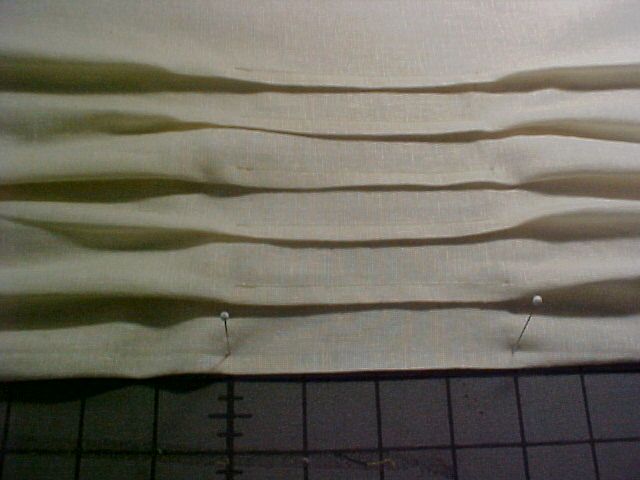
I had a friend try a shirt on and with a tape measure (I always carry one with me!) I measured the pleat placement. In looking over various styles, the pleats seemed to be pretty much in the same spot on the different garments, and had the same height and width. In addition, the shirts all had a similar look, what was once a square ‘boxy’ style now had a nipped in area…front and back, but was not tight to the body, just a hint of shape at the waist area.
The bottom of all the pleats started at the waistline and were about 4-inches high and 4-inches away from the center front. The shirt circumference determines how many pleats you can stitch on both the front and back of the shirt. in the various styles I studied, I counted as few as 4 pleats to as many as 8 pleats on each front side and from 3 to 6 on each side of the back. The space at the center back between the pleats was about 6 to 8-inches. Every shirt had pleats on both the front and back to balance the style.
You can start with a ‘boyfriend’ style square cut shirt from ready-to-wear (one that might be hanging in your closet for a while) or an oversized shirt pattern would be perfect for the pleat addition. To start the pleats in the proper location you have to measure ‘you’ first.
Measure from your shoulder (right below your ear) over your bust point and down to your waist in a straight line. The point where this line crosses at your waist, will be the bottom of the pleat. On the pattern, measure from the stitching line at the shoulder/neckline straight down the front of the pattern, parallel to center front and mark the bottom…
Start your 14-day FREE trial to access this story.
Start your FREE trial today and get instant access to this article plus access to all Threads Insider content.
Start Your Free TrialAlready an Insider? Log in


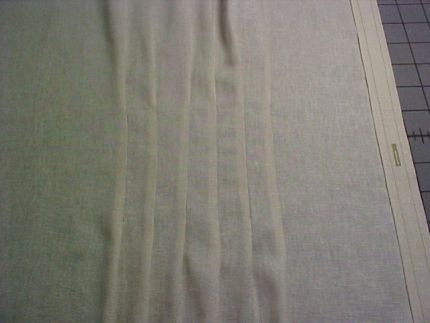
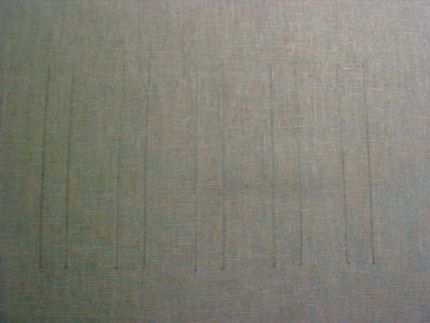

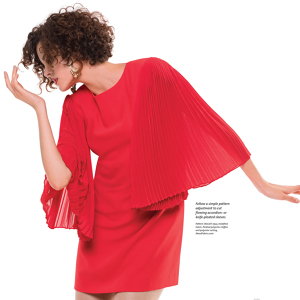
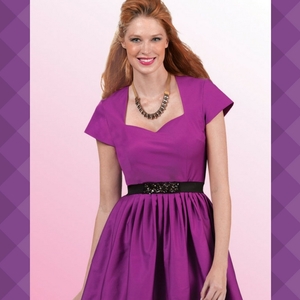
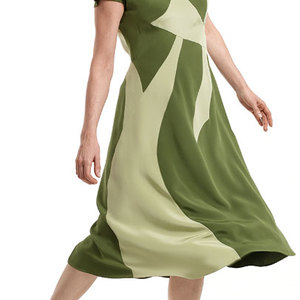
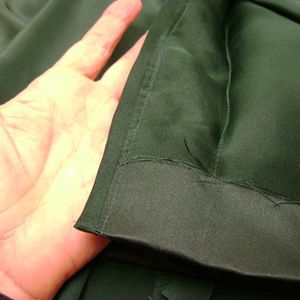
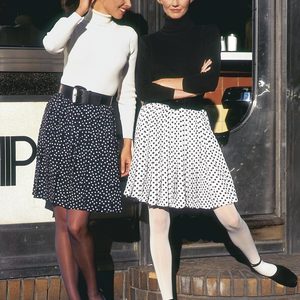


























Every instruction I've ever seen for "cartridge" pleats involves two perfectly even and closely spaced lines of thread sewn at a pre-determined interval. You should re-name this post to reflect that it isn't really using cartridge pleats to create the details.
I'm with mdevries. I do historical costuming and the pleats shown are not cartridge pleats. The Cartridge Pleats title caught my eye because I've never seen cartridge pleats in modern clothing - unless it's being smocked over.
To me, these look like regular ol' pleats but with quite a lot of fabric between them. I thought cartridge pleats were round and looked as though they had padding inside to keep them round.
I agree, after researching cartridge pleats for the past 18 years, this is NOT a cartridge pleat.
I appreciate that you have done something cool, but really I agree with the other posters that it should be properly called.
>http://www.elizabethancostume.net/pleats/ has instructions on a cartridge pleat, as well as
http://en.wikipedia.org/wiki/Pleat
I was happy to see the title as a costumer and thought, Oh cool, a way to show others. But frankly I cannot support the title with the descriptions. I'm sorry.
I agree with mdevries and jtknits--these are *not* cartridge pleats! They are just regular pleats. Let's not use incorrect terminology. As mdevries says, cartridge pleats are creating with two perfectly even rows of hand stitching and the stitches must line up exactly! Then they are gathered onto a band by hand stitching. The resulting appearance resembles a belt of cartridges--bullets, if you will--tiny little extremely regular and closely space pleats resembling a cartridge belt. The look is *very* distinctive. These pleats are not even remotely similar. Please don't mislead people this way!
You are absolutely correct - these are not cartridge pleats. True cartridge pleats were common in the past and are lovely, but are rare today. Today, besides smocking, they are seen in the sleeves of academic (graduation) gowns and window drapes. The advantage of cartridge pleats is that a great deal of fabric can be compacted into a very small space. This website shows the different types of pleats: http://www.elizabethancostume.net/pleats/
This website shows how to make true cartridge pleats: http://www.elizabethancostume.net/cartpleat/
These are pin tucks, at least what I was taught to call pin tucks. They are long but still the instructions are very pin tuck-ish. I have to agree with the other ladies on this one.
Is there a way to get a hold of someone at Threads to get them to rename the article?
Thank you all for pointing out this mistake and keeping us on the ball! This was meant to be corrected, but accidentally got through and published. These are not cartridge pleats. We have adjusted to text appropriately and apologize for the error.
Who cares what they are called? I thought it was a really neat idea to re-design some shirts I already have. And they will look a lot more feminine.
OK already - so we have established that these are not cartridge pleats. Nevertheless the post was inspiring and something that I will certainly investigate with my shirts and blouses. These pleats are so "on trend" at present and will update your wardrobe at very low cost and little extra sewing time.
Vogue 1045, 'Today's Fit' by Sandra Betzina has a very simple pattern similar to this, for those who like to start from scratch. It makes a very cool and stylish top for the summer. Thanks to those who posted the Elizatethan Costuming link.
While I totally respect Louise Cutting and her abilities, these are not ANY kind of pleat. They are tucks or pin tucks. Before we correct anything lets do some research and get it right Threads.
I truly appreciate having these instructions and photos in a format I can print and place in my "things to try" sewing notebook. While I've made pleats and pintucks in different patterns, I love the idea of trying them on already purchased, ready to wear items.
And, it's so nice to be among a group of people who are talented and experienced enough to be able to leave interesting comments on so many topics.
Those who are learning to sew or working to add to their skill set, would benefit a great deal from seeing an actual finished garment in the photos. While most experienced seamstresses are able to visualize an awful lot, inexperienced or novice seamstresses sometimes aren't so lucky. Just a thought for future articles.
To those who corrected the cartridge pleat "oops" - keep up the good work! We need to all speak the same language if we are to help others grow. (and of course, it goes without saying, it should be the correct terminology!)
Now, everyone, back to your sewing machines!
This is a great idea!
In a blouse or dress, what type of shoulder line would these pleats look good with? I have some boxy camp shirt type silk shirts I would like to try this with but the shoulder line/upper sleeve is also very boxy and hangs down over my shoulder a few inches. (I am narrow shouldered too.) I am thinking I would have to rework the whole sleeve to pull that line up some. Or do you think a few pleats over the shoulder might work in addition to pleats at the waist? Or would that be too much of a good thing?
For heaven's sake people get on with it!! Who cares what they're called -- this is a great way to solve fitting problems and make a fashion statement by one of the country's best known sewing designer/instructors. I appreciate her explaining where to start these *** and which way to press them!
I disagree with starrsewsabit. It is vitally important that correct termanology is used. I have worked in theatre wardrobe departments for many years and if I instructed some one to cartridge pleat a sleeve head or waistband and they produce these pleats or pintucks the whole job would have to be done again costing time and money, not to mention possibly having to re cut from very expensive fabric.
So lets teach our youngsters and home sewers the correct terms through Threads, which is the leading sewing magazine.
Sorry, Starrsewsabit, but words have an agreed meaning for a reason. Absent a common understanding of what a word represents, there is no communication.
If you, as my customer, ask for cartridge pleats when what you want is a series of tucks, you won't be happy with the finished product I produce, even though I've made EXACTLY what you asked. Sure, I can make up my own name for any technique, but unless everyone agrees to use that name we can't talk sensibly to each other about it - remember the Tower of Babel.
Ireally can't see why everyone has to make a big issue when someone is kind enough to share their ideas and willing to share( I thought that is what this is suppose to be)
What difference does it make weather they are called pleats or pintucks or what ever.
things like this bickering is what causes the death of a good exchange of ideas.
Why would anyone want to contribute to only be put down by snobs, I have quit other sharing sights because of this bickering.
I have been adding the Cartridge pleat to a variety of tunic garments both front and back for a variety of fabrics to give a little more definition and shape to a
tunic style. Of course a belt may do the same thing, but if you are short waisted
this pleat, or Cartridge pleat is nicer and gives a designer touch.
I don't have a problem with the term Cartirdge at all. Right or wrong it is quite appropriate. Now you ladies, get on with your sewing and make this term part of you sewing vocabulary!
Bye the bye, I think I saw some early soldier uniforms with bandolier belts with
cartridge pleats that had bullets in the pleats. Does this ring a bell for anyone?
Well, well, aren't you all so clever, arguing about what these are called. I find it quite distracting. I'm more interested in the technique and plan to use it on an off the rack blouse hanging in my closet.
By the way, these are neither cartridge pleats, nor pin tucks. Pin tucks have the fold showing on the right side and the point of origin is secured withing the yoke seamline. Pleats have the fold showing on the wrong side and the point of origin is secured within the waistband seam. This is a rather recent invention that is still relatively unknown and is referred to as the repetitive compound tuckpleatthingy.
kidding
I for one am not intending to be argumentative, but I stand by my previous post,it is important to get the facts right when teaching and especially posting information on the internet.
great idea, I have several shirts that are to big for me and I love the look of released tucks on a garment, thanks for the memory jog, I'm starting right Now!...okay after breakfast.
have a wonderful day all!!!
maybe this will make my boobs look bigger, no surgery, except to my garment. HeeHee.
I thought these were called open ended darts. I have always liked this technique - I once had a Liz Claiborne dress that had these around the waist and it looked great!
I thought cartridge pleats were open pleats on the right side folded in half and matched folded edges in the center such as are used in cartridge pockets. I agree we need the correct terminology so what is the pleat I described?
Personally, I'd refer to these as released tucks. I've used this method to shape a boxy blouse. I was surprised when a poster commented that it didn't matter what they were called and I have to align with those that responded that word meaning is certainly important in communication. Calling an onion an apple would certainly make a difference to the person taking a bite! But in defense of Louise, the "headline" was written by Threads editors and not Louise. Makes you wonder though about the sewing knowledge of those editors.....
Excellent tip! But what if I don't have a manor - can I sew these in my hovel? ;-)
Thank you to Louise and Threads for yet another great construction tutorial!
I love both of the Threads DVD's with Louise sharing her expertise with clear instruction and Judith asking questions that many of the viewers would have. I refer back to these time and again. I certainly hope that another is forthcoming.
I agree with SilksWithAttitude: I would like to see a photo of the entire finished garment so I can see what my finished product might look like. With these tuckpleatthingies (thanks corrinjrossi), I can picture it quite easily. However, some of your more obscure (to me) projects, I can't visualze what the finished project is supposed to look like. Close ups are great, but how about one photo of the whole garment?
What's in a name? I've never heard of a cartridge pleat. These look like what I've known as tucks. Maybe we can have a future article on different kinds of pleats?
Cheers!
Hi All
Hope you realize that my techniblab was all in humour. Using what I know, limited or otherwise, about sewing, I made up the whole comparison of pleats vs tucks as I typed and invented a name, the repetive compound tuckpleatthingy.
Did anyone decide what they are called?
Especially for those who are sewing beginners, wouldn't we all be well-served to be concerned about the accuracy of the name of a sewing technique, since that's what we're here to learn about and pass on to others? The English language is constantly being degraded as it is. Calling sewing techniques by their proper names helps to preserve our art and increases our ability to identify the range of fabric manipulations which were used in the past and are still available to use today. I certainly appreciate knowing what someone is talking about when they describe a garment, or ask me to make one for them!
Our goal is always to use the right vocabulary in all of our articles, blogs, and correspondence. I agree that using the correct words is vital to clear communication and we make every effort to do so. As Deana mentioned below, we recognize that this is not a cartridge pleat, as originally proposed. However, your dialogue has raised some interesting questions and it seems that there is some confusion regarding what constitutes a pleat vs. a tuck. There’s a fine line between a pleat and tuck—the stitching line. I’ll post some definitions for you by Friday to help clear up the confusion.
Judith Neukam
Threads
I am thrilled Judy will write about the different definitions for pleats, tucks and 'thingys' tomorrow. I was taught years and years ago by one of my sewing teachers that a pleat/tuck on the surface of a garment, even if it was pressed flat, balanced or left un-pressed was under the umbrella of the 'cartridge' heading. So sorry for the confusion. See above for some pictures of the final garment.
Sincerely, Louise Cutting
What Louise has shared in her Threads article is a great way to add interest to any garment; however, they are not cartridge pleats. Perhaps Threads will publish an article in the next issue of the magazine giving some of the history and how to make them. They were used extensively in the 1500s and 1600s and are completely hand sewn. They are not flat but stand away from the body. They are truly beautiful and well worth the effort.
Holly cow "WHATEVER"
I just want to see how to make them!!
I will never be able to remember the name anyways!!!
I read the whole article and learned ALOT!
Thats what I am here for. I have a sewing book that is 4" thick and full of fine print! There is no way to remember every thing in it. I looked up pleats and there are many and at the end of the day-they look like pleats.
People come from different backrounds and learn from different people. I work in HVAC and have heard other techs call the same thing by different names. It just depends where you come from etc.!!!
GREAT ARTICLE, I LOVED IT! (and I am a begginer)
Thanks for sharing your knoweledge!!!!!
Inflecting pleats deconstructed http://lulushion.blogspot.com/2011/08/alexander-mcqueen-bosch-silk-jacquard.html
I have several Eddie Bauer shirts that I've been wanting to tame with this technique since seeing a blouse in an old catalog - thank you for the math.